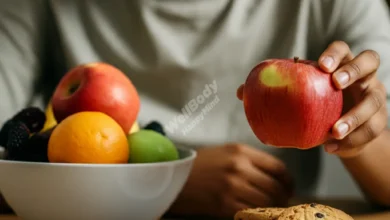Navigating the Ketogenic Diet: A Step-by-Step Guide

The Ketogenic Diet has gained popularity for its potential health benefits, including weight loss and improved metabolic health. If you’re considering adopting this low-carb, high-fat diet, it’s essential to understand the principles and steps involved in navigating the Ketogenic Diet successfully. This step-by-step guide will provide you with the information you need to embark on your Ketogenic journey with confidence and knowledge.
Understanding the Ketogenic Diet
The Ketogenic Diet is a high-fat, low-carbohydrate eating plan designed to induce a state of ketosis in the body. Ketosis occurs when the body switches from using glucose as its primary fuel source to burning fat for energy. By drastically reducing carbohydrate intake and increasing fat consumption, the body enters a metabolic state that offers various health benefits.
Benefits of the Ketogenic Diet
- Weight Loss: The Ketogenic Diet has been shown to be effective for weight loss due to its ability to reduce appetite and increase fat burning.
- Improved Blood Sugar Control: By minimizing carbohydrate intake, the Ketogenic Diet can help stabilize blood sugar levels and improve insulin sensitivity.
Getting Started: A Step-by-Step Guide
- Calculate Your Macros: To enter ketosis, you’ll need to adjust your macronutrient intake. Use the following table as a reference:
| Macronutrient | Percentage of Total Calories |
|---|---|
| Fat | 70-80% |
| Protein | 20-25% |
| Carbohydrates | 5-10% |
- Meal Planning: Plan your meals around high-fat, moderate-protein, and low-carb foods. Include plenty of healthy fats like avocados, olive oil, and nuts, along with protein sources such as meat, poultry, and fish.
Staying in Ketosis
Maintaining ketosis is key to reaping the benefits of the Ketogenic Diet. To stay in ketosis, focus on the following:
- Monitor Your Carb Intake: Keep your carbohydrate intake below 50 grams per day to ensure you stay in ketosis.
- Stay Hydrated: Drink plenty of water to support fat metabolism and prevent dehydration.
Overcoming Challenges
While the Ketogenic Diet offers numerous benefits, it can come with challenges, such as the “Keto Flu” and social situations. Here are some tips for overcoming obstacles:
- Gradually reduce carb intake to minimize Keto Flu symptoms.
- Prepare keto-friendly snacks and meals in advance to navigate social gatherings successfully.
FAQ
Q: Can I follow the Ketogenic Diet if I have dietary restrictions?
A: The Ketogenic Diet can be adapted to accommodate various dietary restrictions, such as vegetarian or dairy-free preferences.
Q: How long does it take to enter ketosis?
A: It typically takes 2-7 days of restricting carbohydrates to enter ketosis, though individual experiences may vary.
Key Takeaways
Navigating the Ketogenic Diet requires a strategic approach, focusing on macronutrient balance, meal planning, and staying in ketosis. By understanding the principles and steps involved, you can embark on a successful Ketogenic journey to achieve your health and wellness goals. Remember to monitor your progress, listen to your body, and seek guidance from healthcare professionals as needed.



